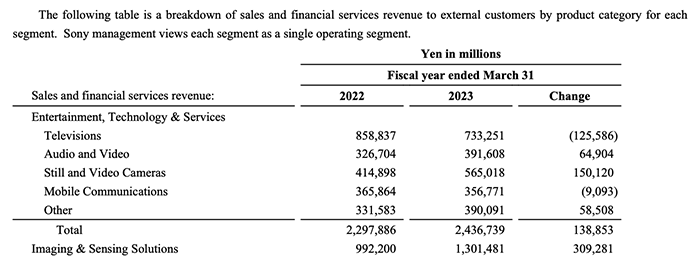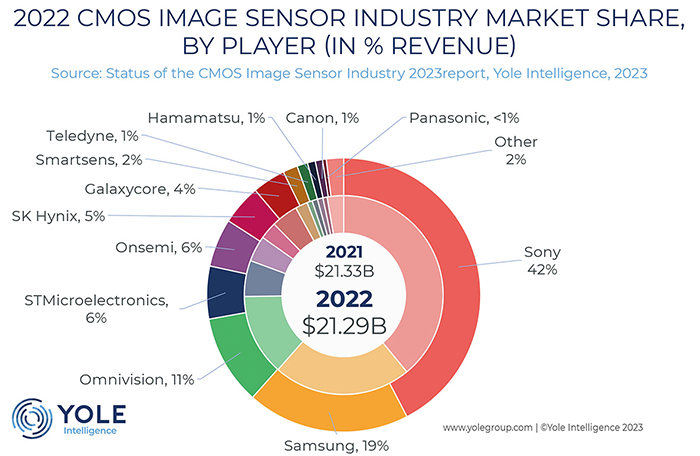I agree with this point. But I think this highlights where me and many people here see this differently. If you are a 1DX user then you more than likely weren't young when you bought it. As you mentioned when they upgrade they are likely doing so with Canon because they can use all the expensive glass they already own. Glass is more important than the body in most cases so the reality is that almost nothing would ever change this customer from Canon to another brand. However this customer is older and and moving toward the tail end of their purchasing stage.
Weirdly enough, I think that older customers (and I am talking about 40-50+ old) have decades of buying left in them and more and more are in good financial places without costs supporting dependents. That is certainly the case for me as a single data point as my insurance policy with everything itemised proves every year.
This continues where we diverge. You are more focused on existing customers that are older. But these older people have a completely different worldview along with totaly different wants/needs. The issue I see is that BOTH Canon and Sony are appealing to these prosepective customers. If you are a professional that needs a high end camera both of them have options. Most high end Canon users will never switch to Sony because they are too invested and vice versa.
Certain high end users will buy into multiple systems just for a particular lens/body combination. examples have been mentioned on this forum before.
Sony's initial switchers were Canon users who had significant Canon glass and could adapt it to the better quality Sony sensor despite putting up with 3rd party dodgy adapters and poor body ergonomics.
My point is the significant double digit profit that Canon is making is consistently referred to for R mount bodies and RF lenses ie for users that can afford the good stuff (even if they complain about it).
The key is what happens as these people are phased out? People may be brand loyal to the Sony Walkman/Discman and will never buy the Microsoft Zune media player. But then what happens to Sony when they younger people become comfortable not owning their own media and instead pay Spotify a monthly subscription to stream all their music?
The "phased out" timeframe is much longer for the higher end gear than a $100 music player. I am sure that a lot of low end DLRS kits end up permanently on shelves.
I would contend that changing paradigm to subscription services from perpetual licenses (SW or music) is not quite equivalent for taking photos for the next 5 years or so (which is the longest that most companies forecast to). AI image generation has increased dramatically of course but the higher end users will still like the quality and realism (however you want to define it) and will pay for it (Canon profits). Again, the lower end has already gone for smartphones and filters.
Again, that's a bit of what is happening here. Older people such as you and me grew up in a world where smartphones didn't exist. We look at film and subsequently digital camers completly different.
So I agree that Canon doesn't have to win every segment. But the segment that they are focusing on is a segment that is becoming obsolete. They are on a path to own 73% of the low end segment.
Again, the only reason they own nearly half the market is because they own almost 70% of the low end segment. The other companies are leaving this segment because its less profitable.
Nikon are not focusing on the lower end of the market because they needed to be profitable and their R&D hit a great product with the Z9/Z8 at an aggressive price point. Let's hope that they can stay in the market for the longer term but their market share is becoming niche.
Canon are not focusing on the low end. Yes, the volume marketshare shows a lot of DLSRs being sold which is a great cash cow for them. Again, you are assuming that they have lower margins but you can't know this. The R&D costs are sunk so they could be very profitable in % terms and volume => big cash profits .... but the driver for increased profit is in the higher end and new glass and Canon is setup for the future there
I think we are all guessing here but YES, I'm guessing that Canon currently isn't making the right strategy for long term success. I agree Sony HAD to make that open mount move because they didn't have enough lenses but the reason why they had to do it is irrelevant if it becomes the long term winning strategy.
Canon needs to ditch the old stuff and go all in on the RF mount today so that the RF mount becomes the most dominant has has the most brand recognition.
Look at it from this way. Canon has the largest market share by volume because they are the only camera company selling cheap cameras. But we know cheap cameras will become obsolete. So 15 years into the future when a current 25 year old is 40 years old and at peak purchasing power how will they view the camera brands?
I'm not following you here... time will tell if Canon's long term strategy is good or not. We can only comment about the situation today and in the recent past and clearly Canon is winning in marketshare and profitability. This sets them up for the future.
Canon's brand is dominant today. Canon is all-in for their R mount bodies and RF lenses. They are selling excellent tech stuff for both lower end and high end lenses and 12 bodies. They are missing the mid market lenses currently and have a couple of gaps but let's chat again in 6 months for the status.
15 years in the future is a long time to make a call and frankly it isn't worth discussing for today's market strategy even if Japanese companies have longer strategies than most countries
There are only 3 things we know about forecasts... they are wrong, they are more wrong the further out they are and they are better than not having one!
Most people will have never heard of Canon. Canon essentially makes cameras and printers, two things that young people don't need. Meanwhile Sony sells a host of electronics like tv's, headphones and the best selling video game console of all time.
Older people here continue to keep say "but Canon is the top brand". These young people don't care as much about legacy brands. Companies need to invent themselves for these newer generations.
Leica doesn't need to have either volume or consumer brand acceptance to be both profitable and long term.
High end brands for quality like B&O, Harmen Kardon, Mark Levinson and others in the audio space are partnering with more lower end volume sellers to showcase technology at a different price point. Young people are introduced to these brands through a different channel.
Irrespective, to assume that Canon won't re-invent themselves for younger people in years to come is a strange forecast of yours
For example Canon cameras are hands down more comfortable to hold than Sony cameras. But Sony cameras look like cooler pieces of tech. There is a reason Sony isn't improving the ergonomics. They've slowly added deeper grips but for the most part the want cameras to look cool. Meanwhile for as good as the Canon cameras feel in the hand the look like old DSLR's.
How do you define looking "cool"?
There are retro designed bodies and they have a niche but good ergonomics are hard to define and easy to enjoy as a hygiene factor. I just got a Sigma 20/1.4 Art and the noisy AF motor is super annoying and couldn't be used for video... this coming from Canon L glass user. Thankfully I will only be using it in manual focus.
Getting something cool and regretting the purchase because it is hard to use is a learning experience.


